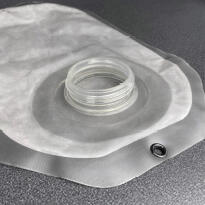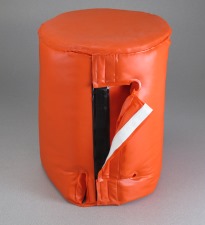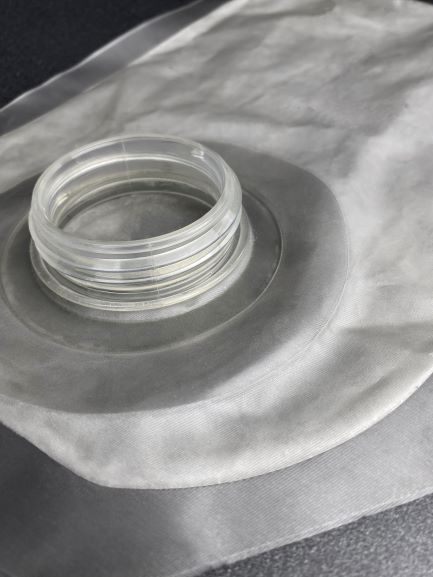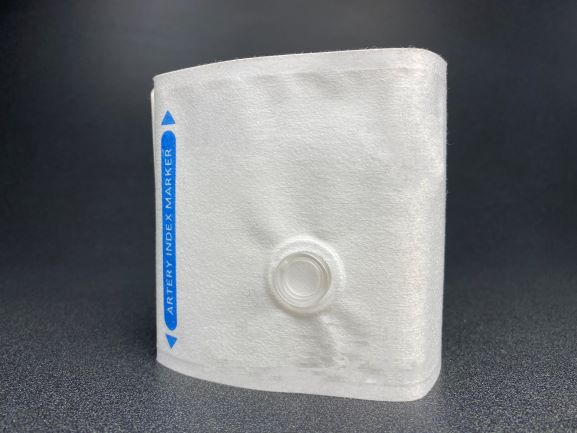RF Sealed & Heat Sealed Plastics

Radio-Frequency (RF) and Heat Sealing are economical methods of bonding plastic films and nonwovens without the use of adhesives. Our range of sealing equipment, matched with an ISO 9001 and AS9100 registered quality program provides an excellent choice for companies looking for custom assemblies, medical fluid bags, inflatables, pouches, and enclosures.
Insul-Fab specializes in the material selection and design support of radio frequency sealed and heat sealed processes for custom assemblies. Proper design and tooling are required to ensure a strong and consistent bond which may often exceed the tensile strength of the materials themselves.
RF and Heat Sealing Product Summary
- PVC, EVA, and polyurethanes are the most common materials for RF welding.
- Polypropylene, polyethylene, nylon, and other materials are best for traditional heat sealing.
- 40+ years of expertise in RF Sealing custom applications with Cosmos/Kabar equipment.
- Common applications include medical therapeutic devices, fluid bags/pouches, inflatables, and enclosures.
For years, the medical industry has used the radio-frequency (RF) sealing process to manufacture IV and fluid bags. However, any flexible containment bags for air, fluids, or vapors requiring a leak-proof perimeter, make an excellent candidate for RF sealing.
Bag Sealing
RF energy is used to seal together two or more layers of film or laminated textiles — typically PVC, EVA, or certain polyurethanes — to form an indestructible, leak-proof bond between the materials. In addition to fluid bags, the process is used to make blood-pressure cuffs, hot and cold packs, leg-compression sleeves, aircasts, immobilizing pillows, and many other disposable devices. Although these products are extensive and varied, the technique for sealing them is essentially the same.
RF sealing is the use of pressure and radio waves channeled through two or more layers of a dielectric plastic that causes the molecules of the plastic to combine when the material becomes molten. The RF energy is then shut off while the tooling holds the plastic in place to cool under pressure. What results is a seal with equal or greater strength than the material itself. The seal is consistent and uniform, enhances its tensile strength, and maintains the material’s color profile and appearance. Other sealing methods, such as thermal, impulse, or ultrasonic sealing, do not share this advantage and are limited in the consistency, quality, and permeability. They are often employed in small-area spot sealing or in applications for which product appearance is not important, such as polybagging or tack sealing to locate parts.
Tubes
The RF sealing process is recognized as one of the best ways to weld one or more tubes into the seam of a flexible bag or enclosure. Typically, the tube is slid over a mandrel and is placed in between two layers of material. When RF energy is applied, the weldable materials all temporarily soften and fuse together in a 360° circular seal around the tubing, creating a leak-proof insertion joint.
Ports
Similarly, ports designed to connect tubes or valves to inflate and release air, vapors and liquids are another common RF sealing operation. Products like blood pressure cuffs, flotation devices, containment bladders and inflatable pillows are typically outfitted with valves or connection ports to mate them with other devices. Since these ports must be leak free and able to withstand manual connection to peripheral devices, RF sealing offers the durability to allow easy insertion and connection without damaging the leak-proof bond.
Why InsulFab
With over forty years of experience in large and small part RF Sealing, InsulFab is a leading expert in all aspects of design, tooling, production and part testing. Bag makers should work with reputable, experienced RF companies to ensure the proper selection of raw materials, tooling design of equipment setup to ensure quality and economy.
Product Applications for Radio Frequency and Heat Sealed Plastics
- Medical therapeudic devices
- Patient warming products
- Fluid bags with incorporated tubes and ports
- Enclosures for acoustic insulation on noisy equipment (see Acoustic Insulation Covers)
- Hydration pouches
- Protection gear and safety products for military and emergency personnel




